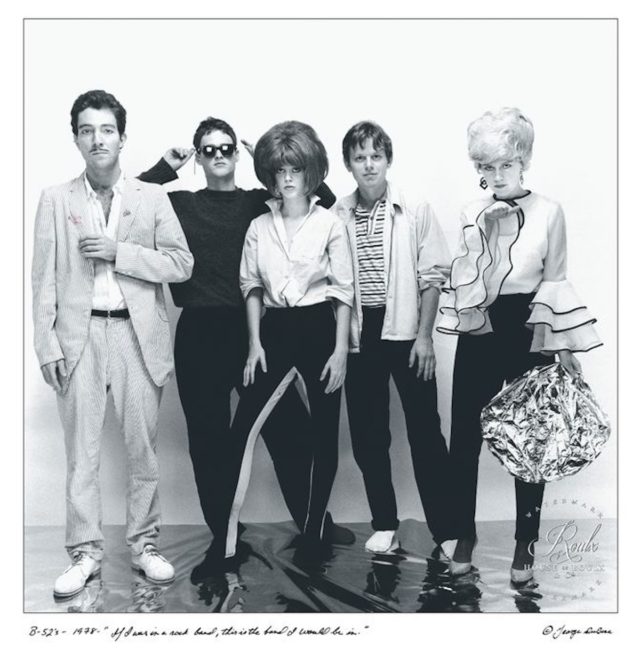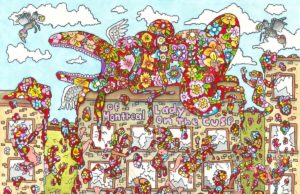 I have a record wall at home — three narrow shelves which hold nine LP sleeves. It’s heaps of fun to come up with new themes. At the moment, the theme is albums from 1979, because it’s my sweetie’s birthday. One of the albums I chose is the debut by The B-52’s. The bright yellow cover is striking and it’s quite obvious that the photo of the band has been heavily manipulated. The colours of their clothes have been altered, the background has been removed, and Cindy Wilson has been given a purse.
I have a record wall at home — three narrow shelves which hold nine LP sleeves. It’s heaps of fun to come up with new themes. At the moment, the theme is albums from 1979, because it’s my sweetie’s birthday. One of the albums I chose is the debut by The B-52’s. The bright yellow cover is striking and it’s quite obvious that the photo of the band has been heavily manipulated. The colours of their clothes have been altered, the background has been removed, and Cindy Wilson has been given a purse.
I took photojournalism in college and worked in that field for many years, so photo manipulation is pretty interesting to me — particularly the old-school, hands-on variety. So I thought I’d go through some neat ones — comparing the album cover you know, with the original photograph. (NOTE: I’m assuming these images have been so widely circulated that the original photographers and rights holders are cool with me using them; if not, please contact me and I’ll be happy to remove them.)
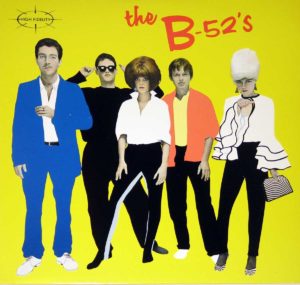 The B-52’s image was shot for poster and promotional purposes by George DuBose in New York City, Dec. 12, 1977. It was the first band he photographed — on spec. It panned out, obviously. Not only did his photo grace their first album, but he went on to do the cover photos of around 300 albums.
The B-52’s image was shot for poster and promotional purposes by George DuBose in New York City, Dec. 12, 1977. It was the first band he photographed — on spec. It panned out, obviously. Not only did his photo grace their first album, but he went on to do the cover photos of around 300 albums.
Another notable debut album — albeit one released a decade later — is Nirvana’s Bleach. The iconic cover photo, printed in reverse like a negative, was shot by Kurt Cobain’s then-girlfriend Tracy Marander. It shows the band — which still included second guitarist Jason Everman (though he doesn’t appear on the album) — playing at the riot grrrl-founded Reko Muse art gallery in Olympia, WA, April 1, 1989.

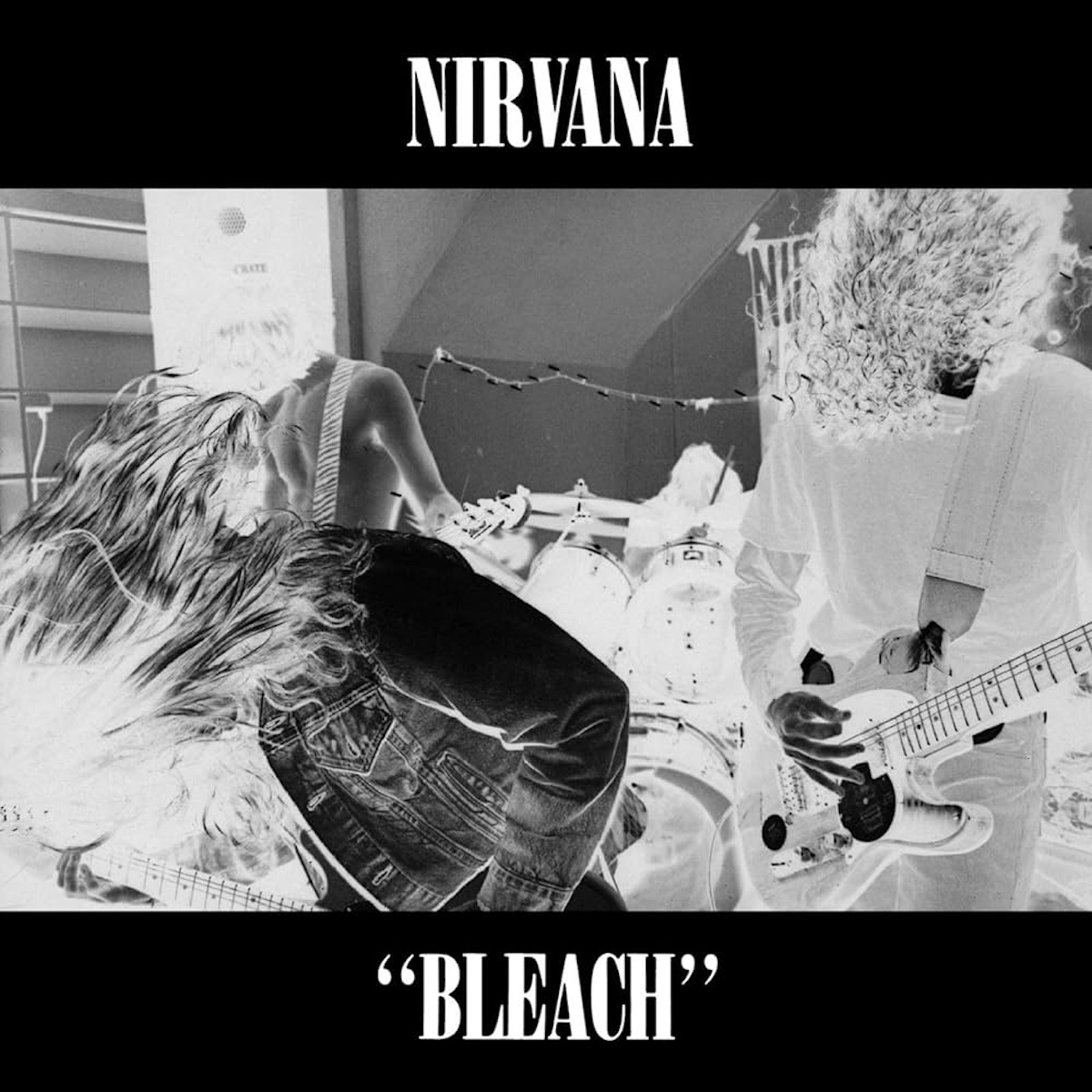
A few years ago, images of Robert Freeman’s uncropped portrait of The Beatles, used for the cover of 1965’s Rubber Soul, were being circulated online. Freeman is perhaps best-known for his famous portrait of The Fab Four used on the oft-parodied black-and-white cover of their sophomore album, With The Beatles. The Rubber Soul cover shot was taken during a photo session in the garden at John Lennon’s Weybridge home sometime in the fall of 1965. Later, The Beatles went to Freeman’s studio to pick their favourite image from a slideshow of the session to use as the cover. In order to help them imagine the image as the cover, Freeman had a piece of cardboard cut in the dimensions of an LP. He’d put the cardboard frame around the slide on the projector to show the boys the image cropped as an album cover. After the band chose the image which would be the Rubber Soul cover, the cardboard and projector got bumped and the template slid, leaving the image improperly projected. What appeared on the screen was a warped, distorted image which the band LOVED. They asked Freeman if he could do it this way, and he told them sure. That’s how the cover came to be the way it is — a total happy accident. Like me.

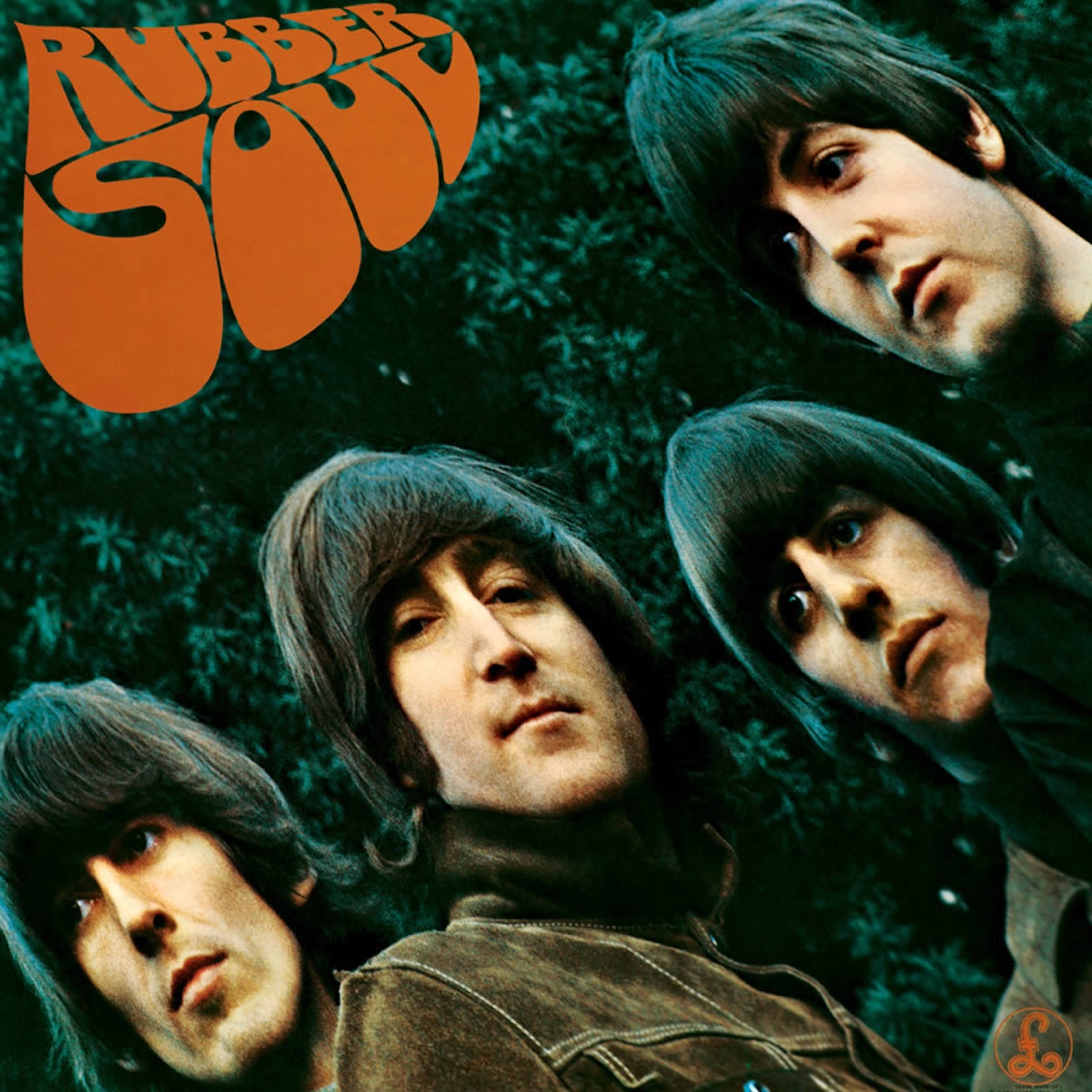
Led Zeppelin’s untitled fourth album is by far their best-selling record — nearly 40 million copies. That makes Lot Long one of the most-recognized roof thatchers of all time. The cover artwork of the album shows an old man laden-down with a bundle of sticks on his back. It’s a photo that lead singer Robert Plant found in an antique shop in Reading — where my paternal grandmother’s family is from. The photo was then hand-coloured, placed in an old frame and hung on the wall of a partly demolished home where Keith Morris photographed it for the album sleeve.
The original black-and-white photograph was taken by Ernest Howard Farmer — the first person to head the photography department at Regent Street Polytechnic. Farmer took the photo in 1892 and entitled it simply, A Wiltshire Thatcher. It currently is owned by the Wiltshire Museum. The person in the photograph has been identified as Lot Long (Longyear), who lived from 1823 to 1893, which means he died a year after the photo was taken.
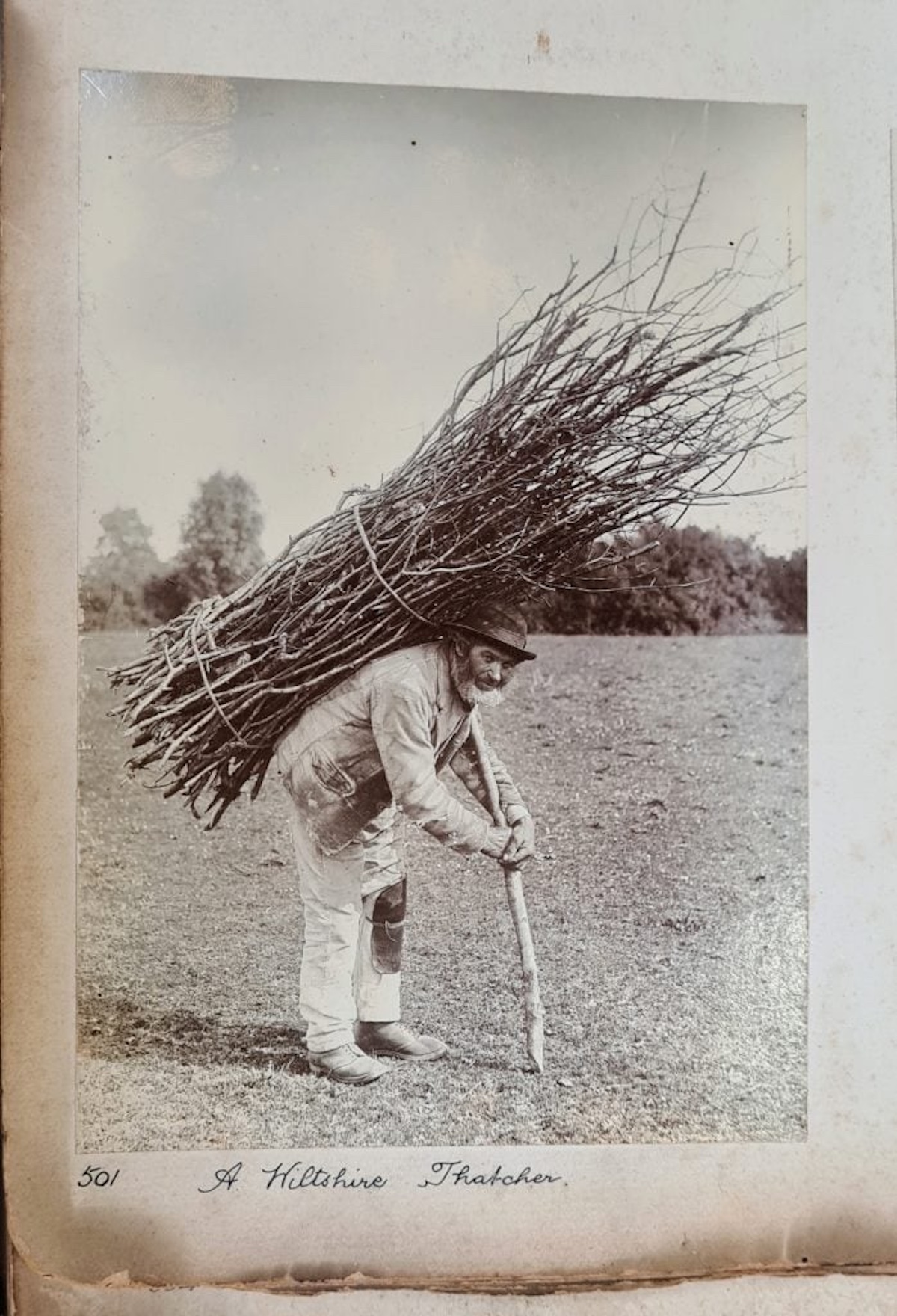

John Lennon’s sixth album was one of the most complicated covers albums of all time, at least in terms of its backstory. Rock ‘n’ Roll finally appeared in February, 1975 but recording had begun two years earlier with Phil Spector — partially to settle a lawsuit over similarities between Lennon’s Come Together on Abbey Road and Chuck Berry’s You Can’t Catch Me. Spector went nutty, Lennon split with Yoko Ono for a bit and hooked up with May Pang, and then initial mixes of this album were improperly released on an unapproved TV-order label. This was an era when popular rock stars like David Bowie and Bryan Ferry put out covers albums, so Lennon’s was nothing new. The picture shows a young Lennon in a Hamburg doorway at 22 Wohlwillstraße. The photo was taken by Jürgen Vollmer, whom the Beatles met in Hamburg in April, 1961 when Lennon was 20. The image was taken while The Beatles were doing a residency at the Top Ten Club, just a short walk away.
Lennon discovered that Vollmer was putting some photos on display and appearing at the inaugural Beatlefest in Sept. 1974 at the Commodore Hotel in N.Y.C. — an event to which Lennon gave his blessing. He sent Pang there to take a look at Vollmer’s photos. After she told him about them, a meeting was arranged between the two. Lennon selected the image for his album cover. The blurry figures in the foreground are fellow Beatles George Harrison, Stuart Sutcliffe and Paul McCartney.
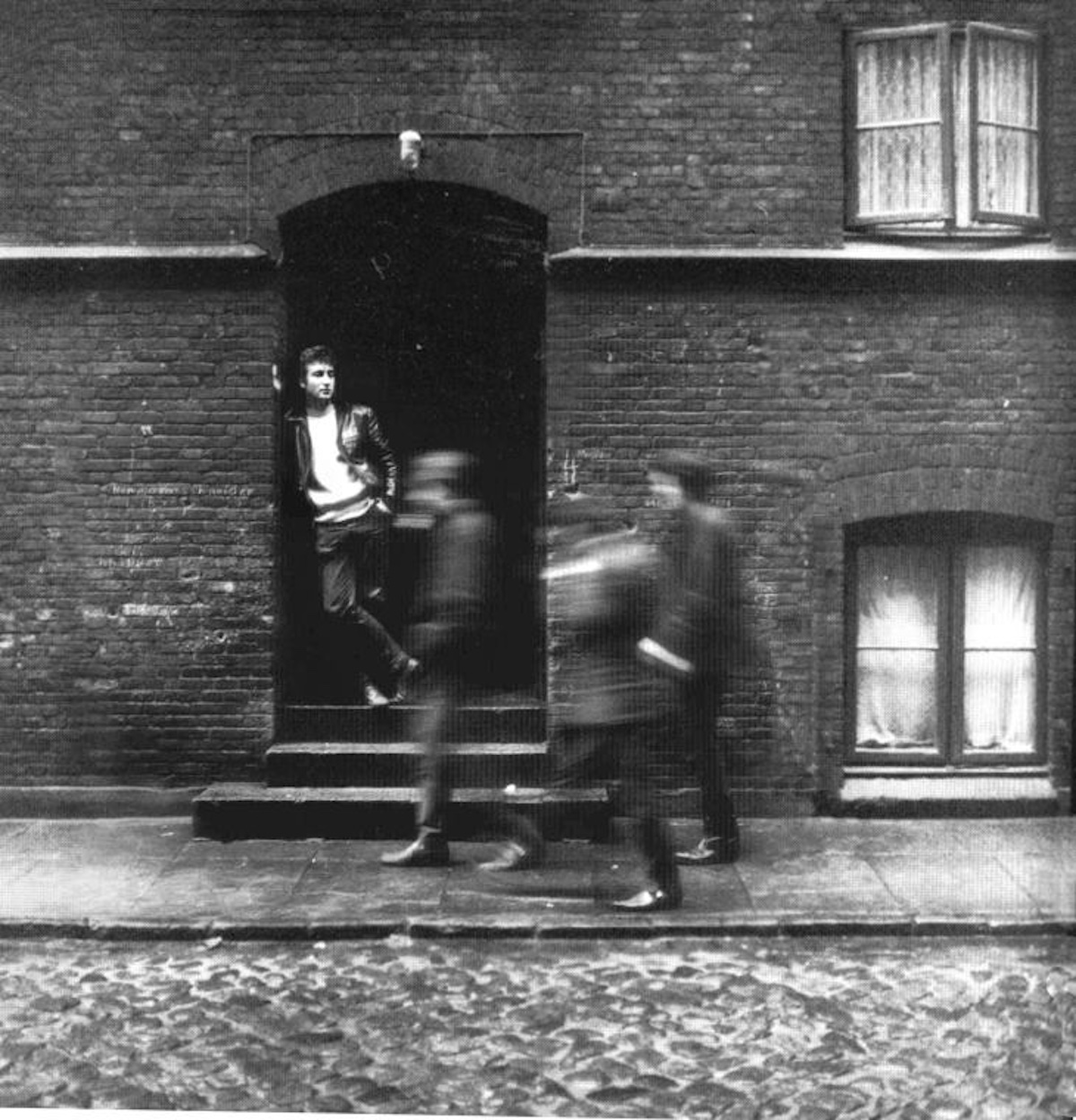
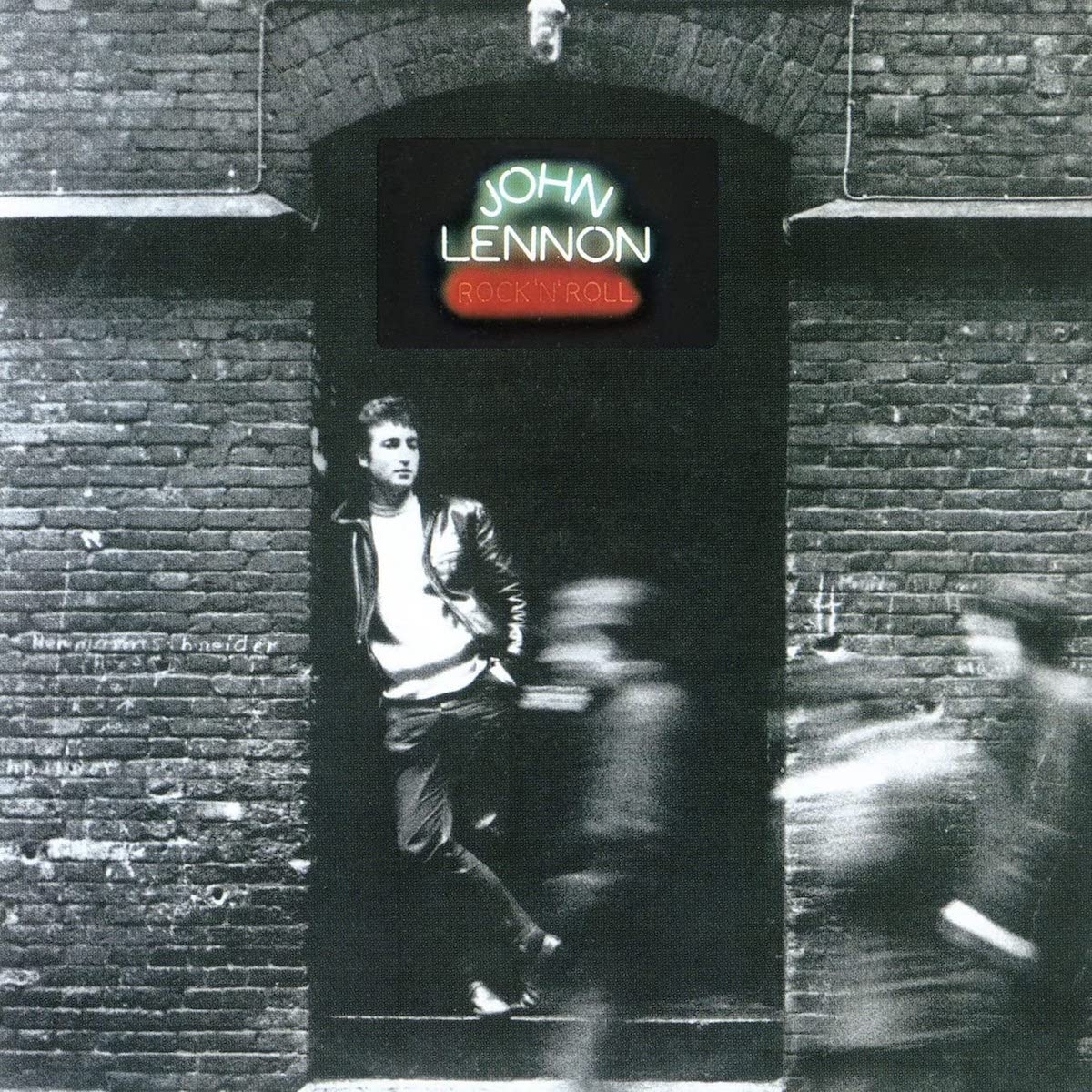
There are probably lots of folks who think the cover of Bob Dylan’s legendary 1975 album Blood On The Tracks is a painting. But the liner notes clearly indicate a cover photo credit to Paul Till — a Toronto photographer and music fan. He scored tickets close to the stage in a lottery, and borrowed a telephoto lens to take the picture of Dylan, live on Jan. 10, 1974 at Maple Leaf Gardens. In his darkroom, Till started experimenting with the images. The frame which eventually became the Blood On The Tracks cover was blown up so it showed only Dylan’s head in profile. But instead of making a print onto paper, Till exposed the image on another piece of film — which created a positive-negative. When he used that negative to make a print, it would appear as a negative — except, during the exposure process he solarized it by flashing a light on and off, creating the unique, painting-like effect. He was so pleased with the result that he mailed the print to Dylan’s office in New York. He was shocked to see it on the cover of the album, because he had received no reply to his submission.
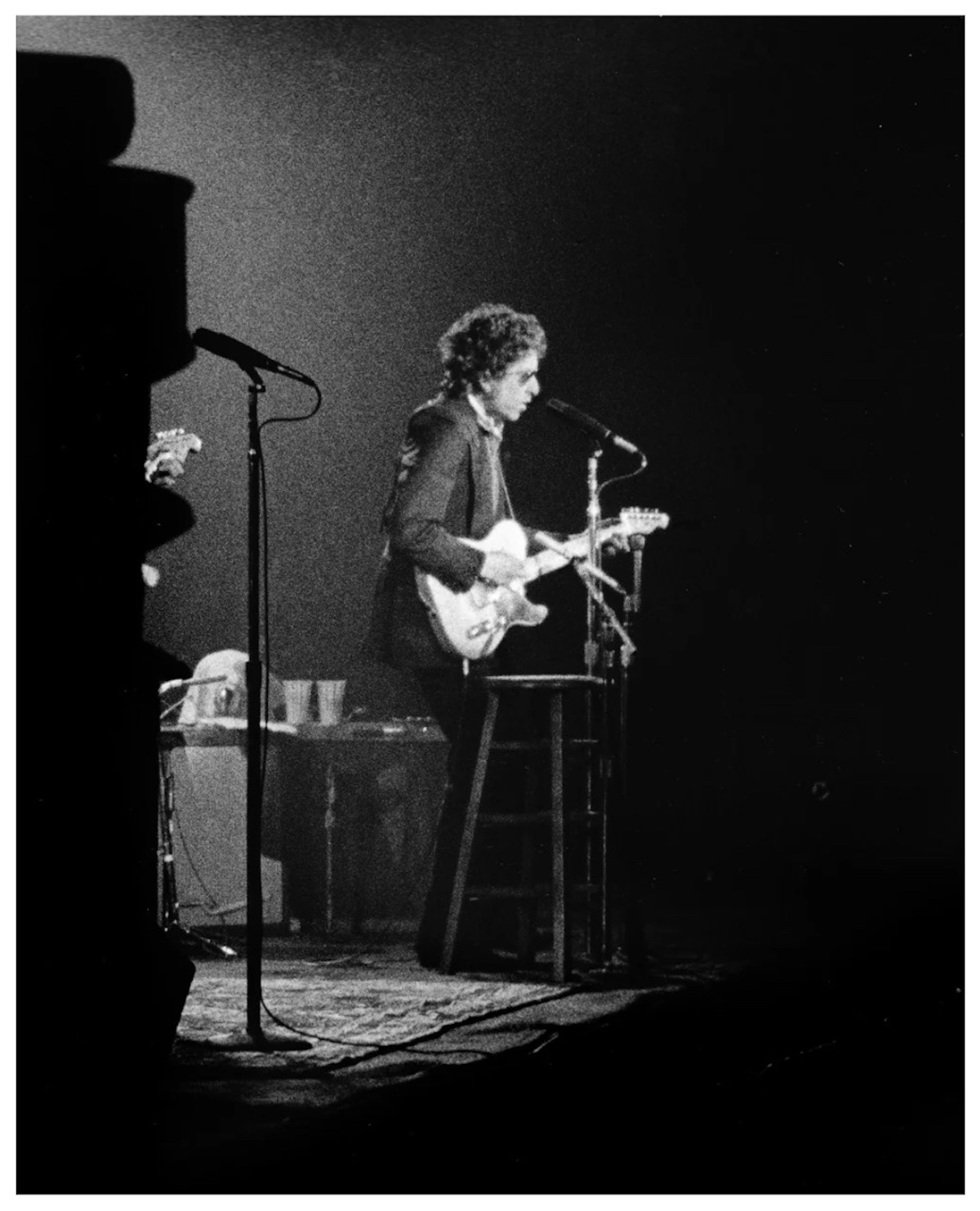

Paul McCartney’s first solo album made in a proper studio following the disbanding of Wings was 1981’s Tug Of War — recorded at George Martin’s two AIR studios in London and Montserrat. The artwork is a blend of a painting by British architectural artist and painter Brian Clarke and a candid photo by Linda McCartney. It’s actually two layers of paintings. Clarke and McCartney are close friends and the pair have collaborated many times since — including the stage set for McCartney’s 1993 world tour, which featured a visual history of stained glass from the 11th century to the present day.

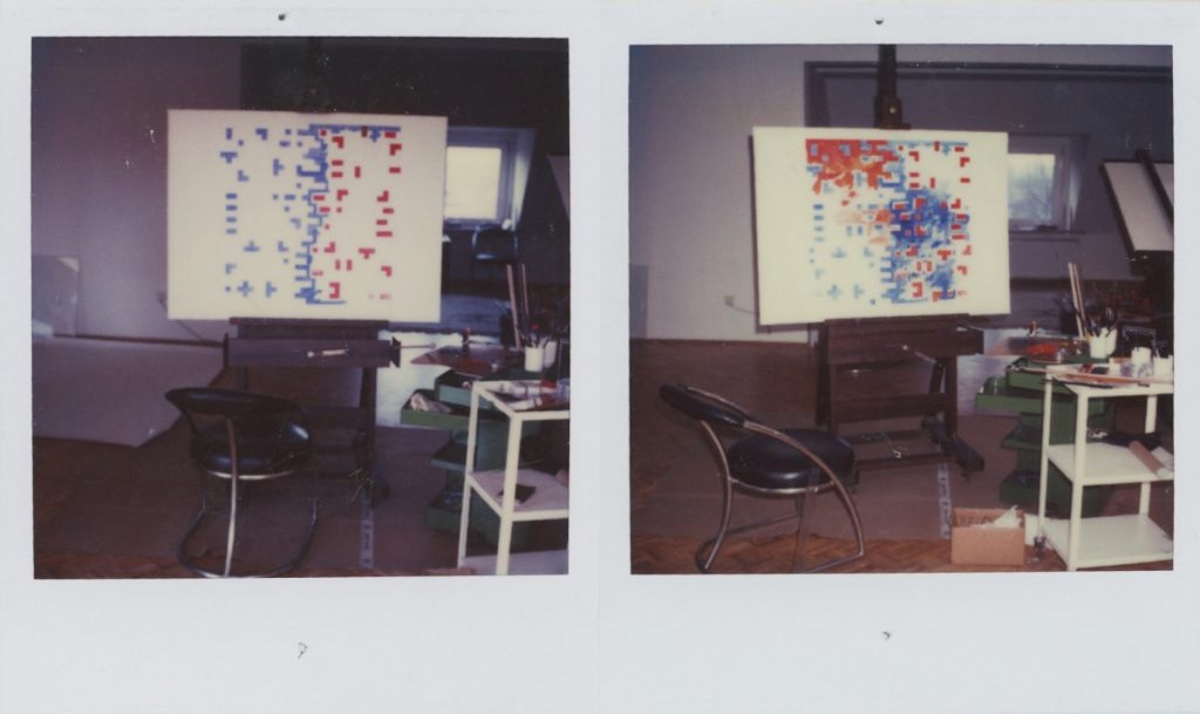
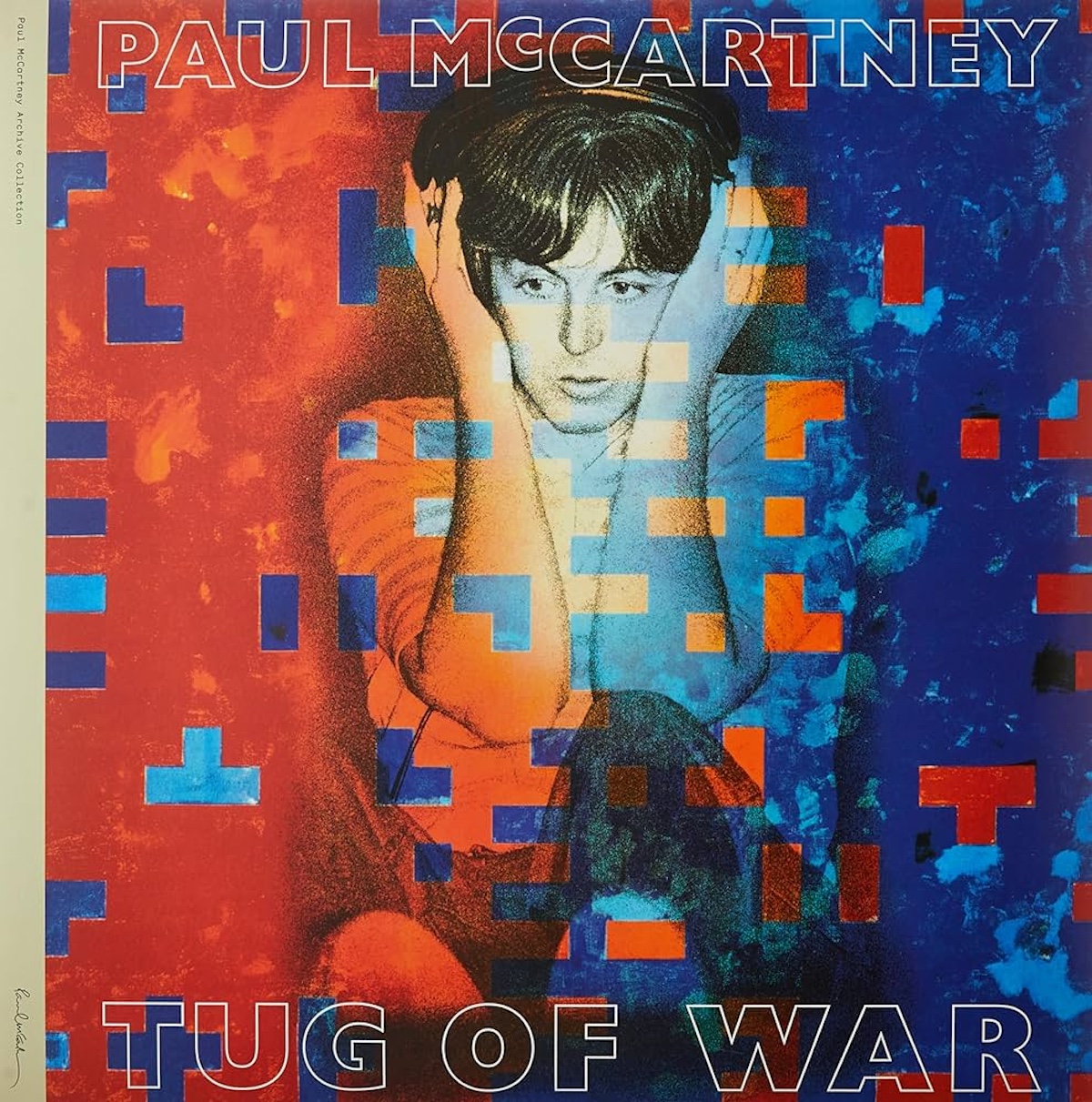
When Peter Gabriel quit Genesis, he had a concept for the cover of his solo albums — that they would have no title apart from his own name, all appearing with the same layout and font as though it was a magazine. The cover artwork of his first three albums was done by Hipgnosis (Storm Thorgerson and Aubrey Powell). His sophomore album, dubbed Scratch, came out in 1978 and got that nickname due to the image on the cover. It appears as though Gabriel is scratching the album photo from within with his fingernails. Thorgerson says the photo was taken quickly, outside near their Hipgnosis studio. The real work came afterward. They made a big enlargement of the photo they liked best — showing Gabriel with his hands up in front of him like a cat, except turned inwards. In those pre-Photoshop days, Thorgerson & co. then tore up a bunch of strips of white paper and chose the ones which best lined up to the tips of Gabriel’s fingers — appearing like tears. Once they had all the strips of paper in place, and stuck onto the photo, they made a few esthetic improvements with Liquid Paper (Tipp-ex in the U.K.), and photographed it.
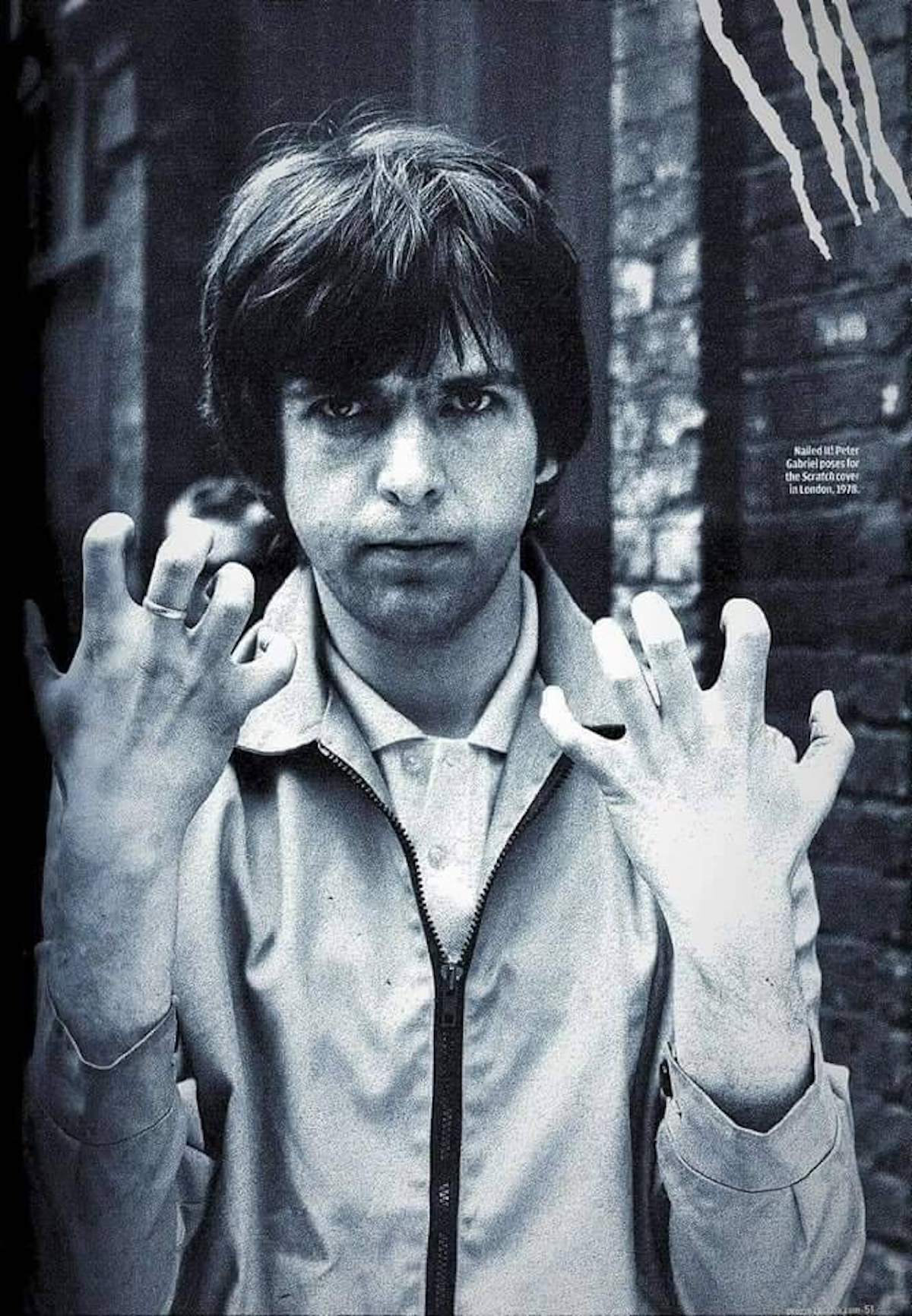

Finally, Elvis Presley‘s 1956 debut album has been imitated many times, most notably by The Clash for the cover of 1979’s London Calling. The iconic image of the 20 year-old Elvis was taken at the Fort Homer Hesterly Armory in Tampa on July 31, 1955. The album’s liner notes credit photographer Popsie Randolph — but he’s the one who took the rear photos. The front photo was actually shot by William “Red” Robertson. Guitarist Scotty Moore and bassist Bill Black were cropped out for the album sleeve photo.
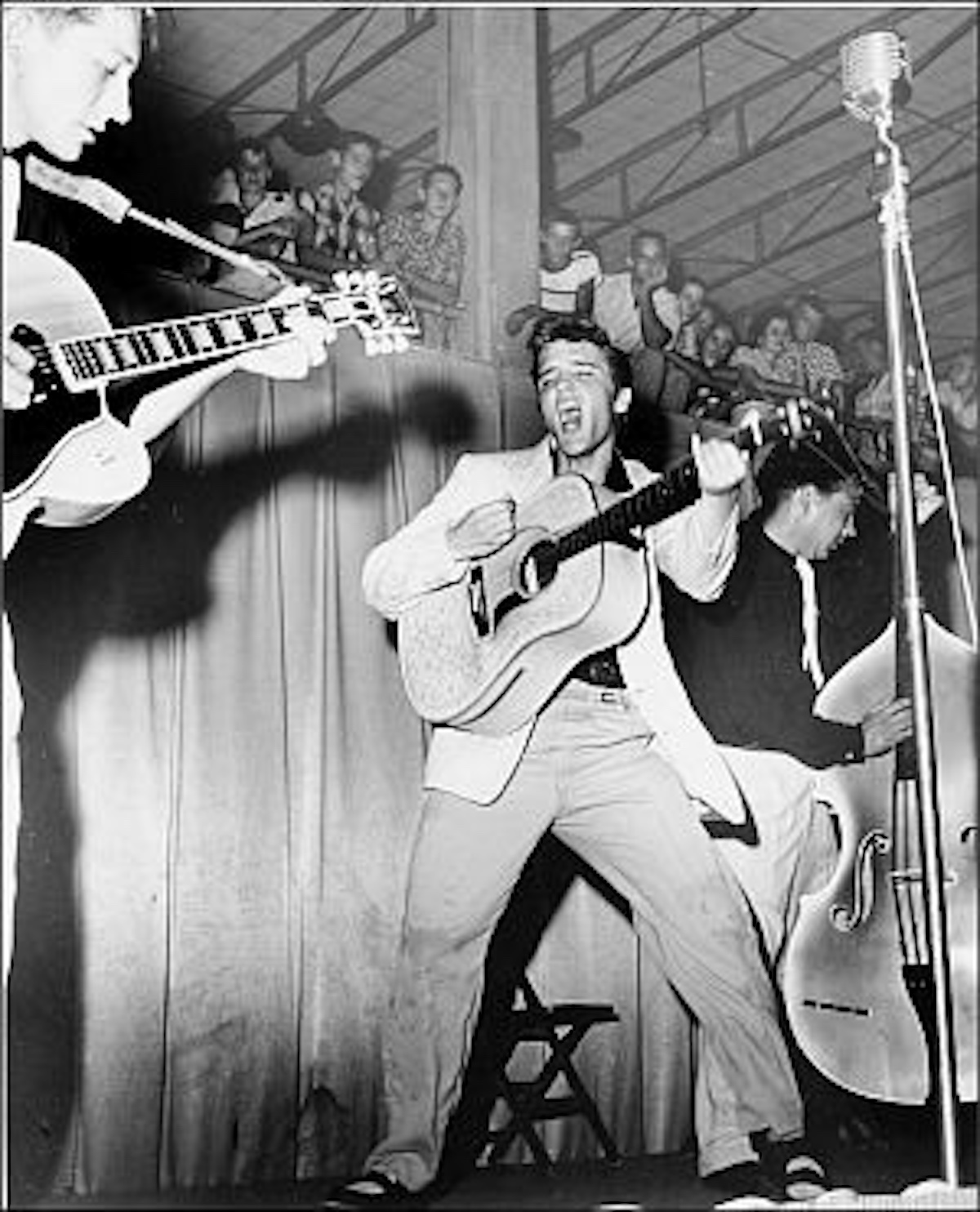
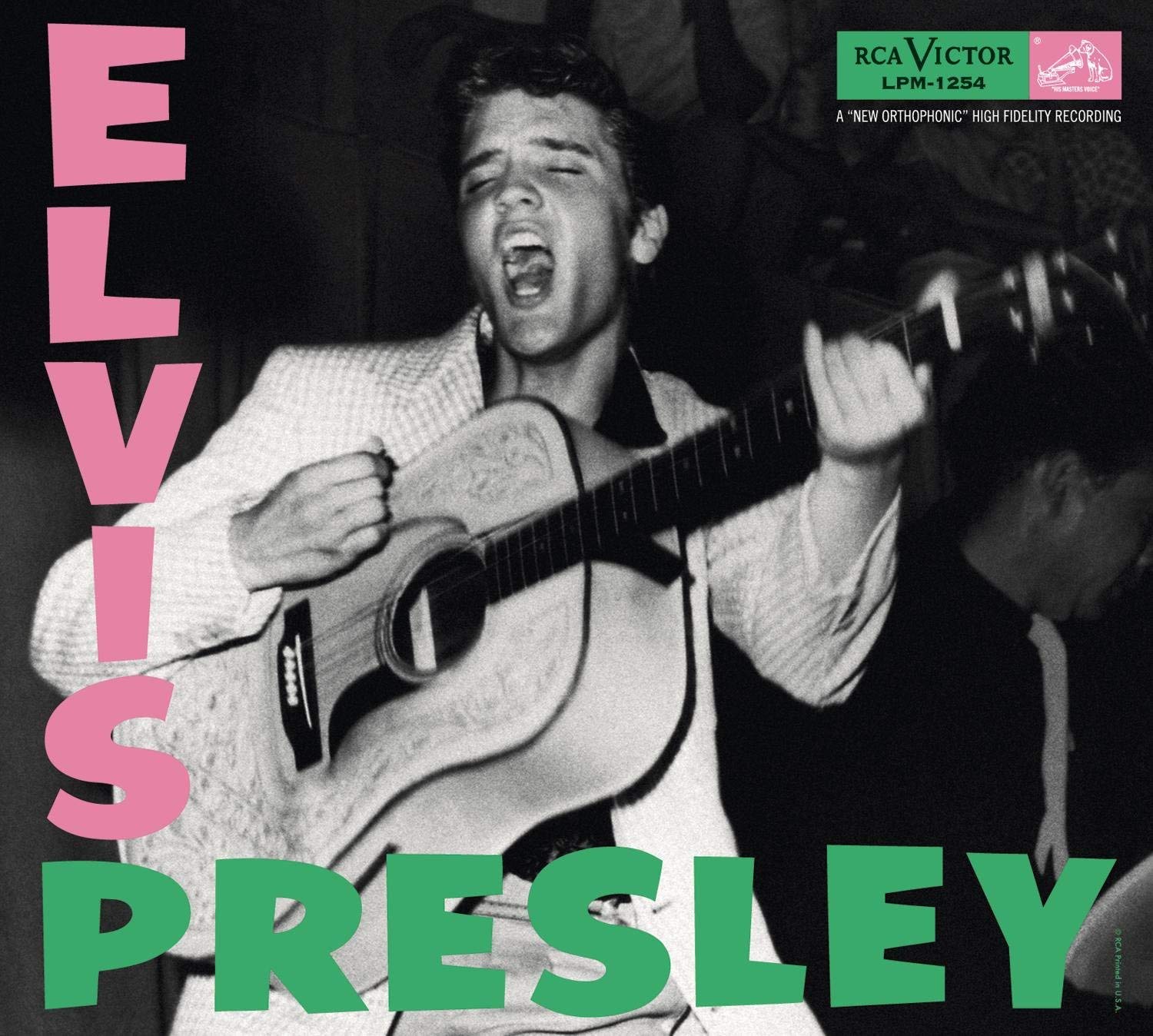
• • •
Area Resident is an Ottawa-based journalist, recording artist, music collector and re-seller. Hear (and buy) his music on Bandcamp, email him HERE, follow him on Instagram and check him out on Discogs.















